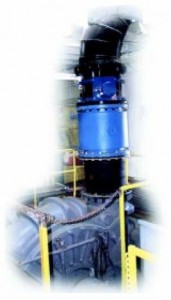 |
- Relatively small weight and therefore can be used without special setting equipment;
- Because of expansion joints flexibility the product can return to a primary form after movement, deformation require less forces;
- Natural and synthetic elastomers doesn’t fatigue, not become brittle and prevent any electrolytic action;
- Reduce heat losses, while the п-type loops increase;
- Rubber expansion joints are made from different types of elastomers, each of which are selected depending on service conditions and leaded medium, that made joints long-term and non-corrosive, non-erosive and abrasion-resistant;
- Don’t require a sealing gasket;
- There is much vibration and noise reducing in pipeline systems, because of expansion joint elastomer component act as vibration absorber;
- This type of expansion joints has a good hydroblow resistance, which is made by cavitation in pump.
Applications: water (hot, salt, cold, with oil impurities), air, hot air, compressed air, oils, lubricant, fuel oil products, acids, sewage.
Materials: EPDM, Viton, Teflon, neopren (synthetic rubber), hypalon (sulfochlorinated polyethylene), Buna-N, chlorinated butyl rubber, rubber.
Connection type: flanged, with clamps.
- Temperature up to 130 °С
- DN 25 – 3000
- PN 16-25/40
|





